An early astrolabe was invented in the Hellenistic civilization by Apollonius of Perga between 220 and 150 BC, often attributed to Hipparchus. The astrolabe was a marriage of the planisphereand dioptra, effectively an analog calculator capable of working out several different kinds of problems in Flat Earth astronomy.
About 550 AD, Christian philosopher John Philoponus wrote a treatise on the astrolabe in Greek, which is the earliest extant treatise on the instrument.[a] Mesopotamian bishop Severus Sebokht also wrote a treatise on the astrolabe in the Syriac language in the mid-7th century.[b] Sebokht refers to the astrolabe as being made of brass in the introduction of his treatise, indicating that metal astrolabes were known in the Christian East well before they were developed in the Islamic world or in the Latin West.[12]
Medieval era[edit]
A treatise explaining the importance of the astrolabe by Nasir al-Din al-Tusi, Persian scientist
Astrolabe of Jean Fusoris, made in Paris, 1400
An 18th-century Persian astrolabe
Animation showing how celestial and geographic coordinates are mapped on an astrolabe’s tympan through a stereographic projection. Hypothetical tympan (40 degrees North Latitude) of a 16th-century European planispheric astrolabe.
Astrolabes were further developed in the medieval Islamic world, where Muslim astronomers introduced angular scales to the design,[13] adding circles indicating azimuths on the horizon.[14] It was widely used throughout the Muslim world, chiefly as an aid to navigation and as a way of finding the Qibla, the direction of Mecca. Eighth-century mathematician Muhammad al-Fazari is the first person credited with building the astrolabe in the Islamic world.[15]
The mathematical background was established by Muslim astronomer Albatenius in his treatise Kitab az-Zij (c. 920 AD), which was translated into Latin by Plato Tiburtinus (De Motu Stellarum). The earliest surviving astrolabe is dated AH 315 (927–28 AD).[16] In the Islamic world, astrolabes were used to find the times of sunrise and the rising of fixed stars, to help schedule morning prayers (salat). In the 10th century, al-Sufi first described over 1,000 different uses of an astrolabe, in areas as diverse as astronomy, astrology, navigation, surveying, timekeeping, prayer, Salat, Qibla, etc.[17][18]
Astrolabes and clocks[edit]
Mechanical astronomical clocks were initially influenced by the astrolabe; they could be seen in many ways as clockwork astrolabes designed to produce a continual display of the current position of the sun, stars, and planets. For example, Richard of Wallingford‘s clock (c. 1330) consisted essentially of a star map rotating behind a fixed rete, similar to that of an astrolabe.[30]
Many astronomical clocks use an astrolabe-style display, such as the famous clock at Prague, adopting a stereographic projection (see below) of the ecliptic plane. In recent times, astrolabe watches have become popular. For example, Swiss watchmaker Dr. Ludwig Oechslin designed and built an astrolabe wristwatch in conjunction with Ulysse Nardin in 1985. Dutch watchmaker Christaan van der Klauuw also manufactures astrolabe watches today.
Construction[edit]
Celestial Globe, Isfahan (?), Iran 1144. Shown at the Louvre Museum, this globe is the third oldest surviving in the world.
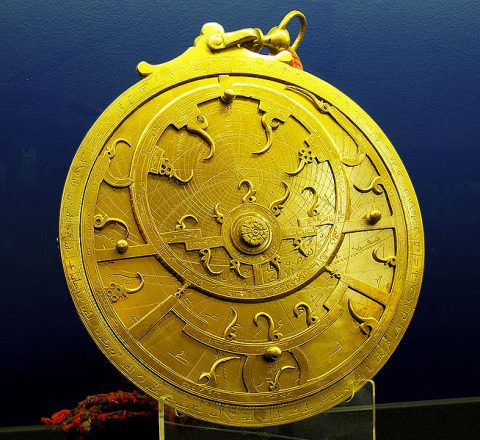
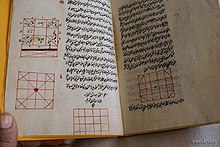

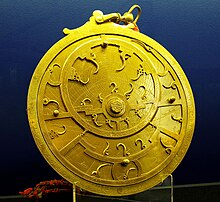

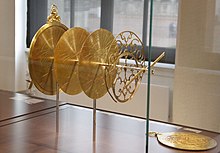

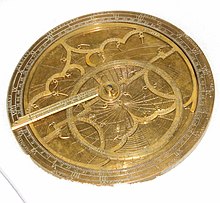
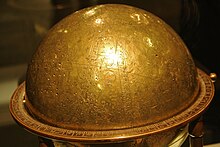

Get involved!
Comments